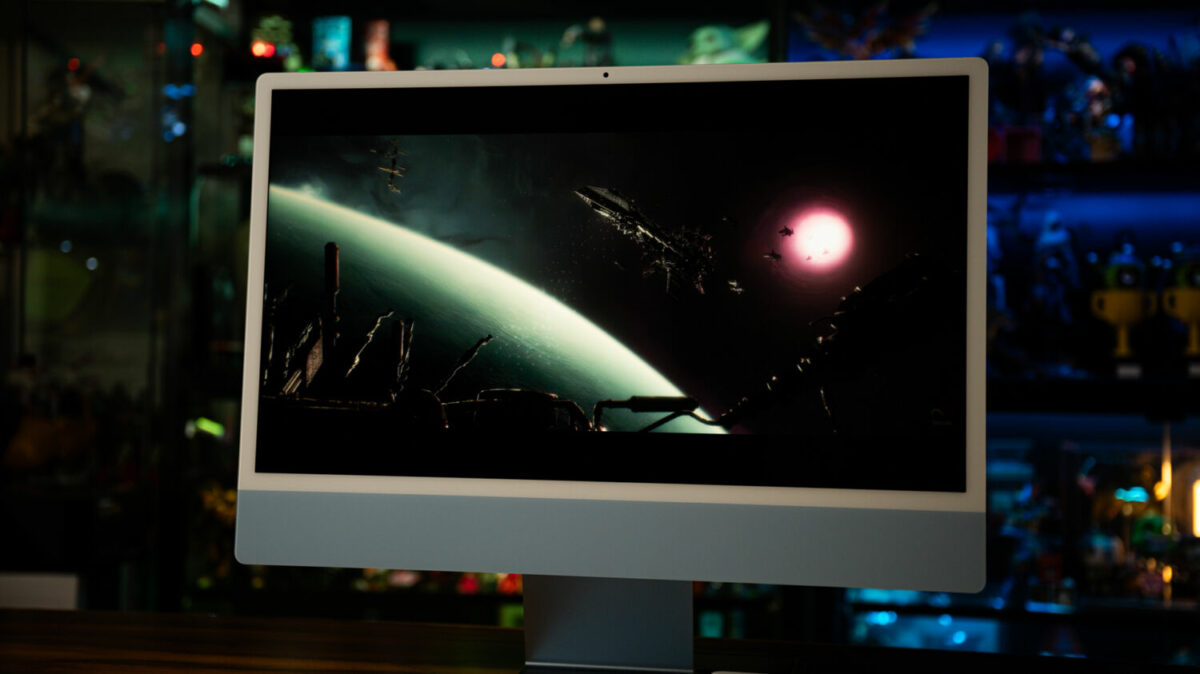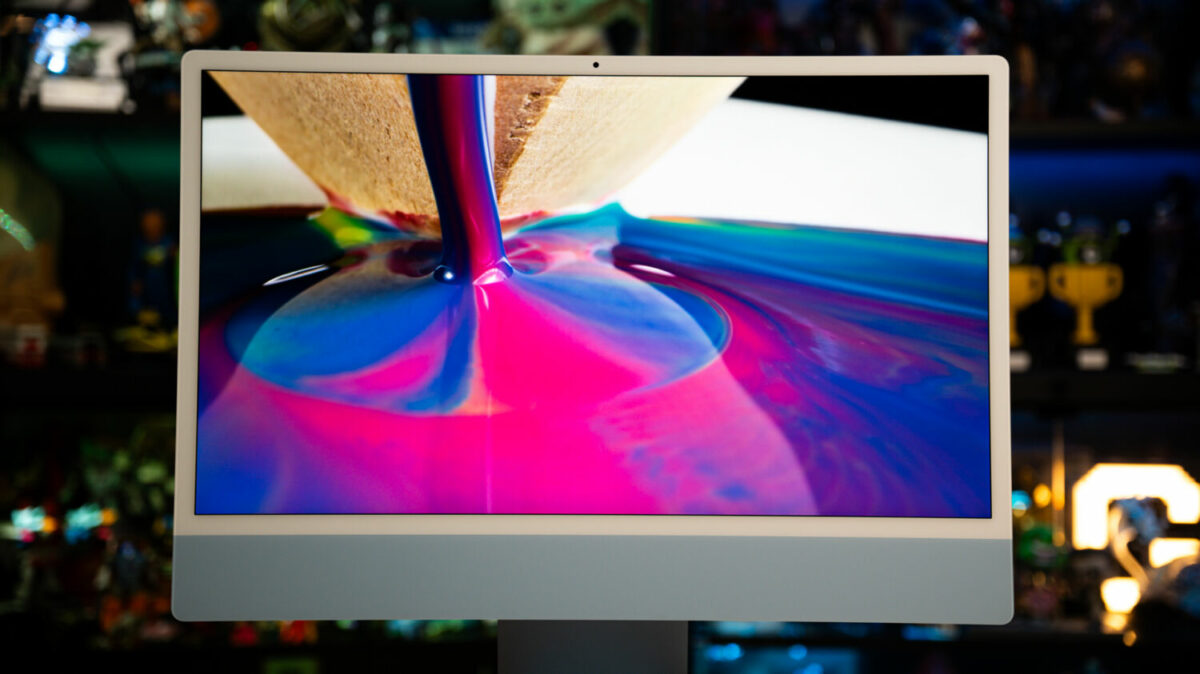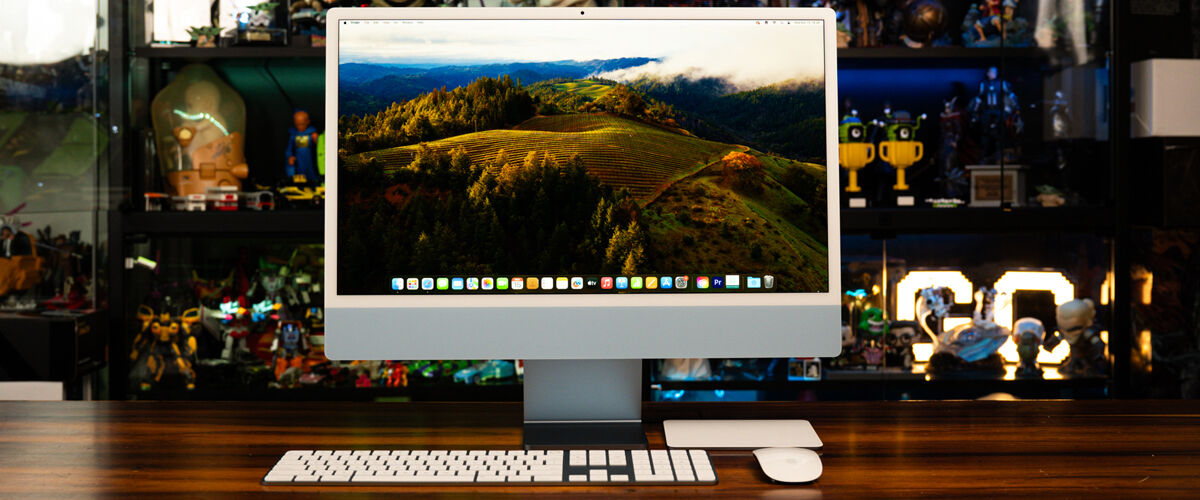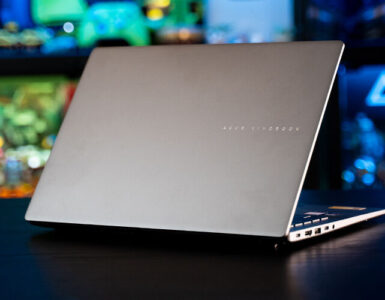It’s been six months since Apple launched the 24-inch iMac with the new M3 chip with quiet confidence, further establishing a device line-up that arrived on the tech scene with a colourful splash back in 2021, when Apple went back to basics and broke its longstanding aesthetic of silver and space-grey for the home machine.

The 2021 arrival of the M1-powered iMac injected a dose of vibrancy into the lineup, rejuvenating the all-in-one desktop concept by blending vibrancy and design with significant processing capabilities. Fans anticipating an iMac upgrade with the M2 in 2022, in a larger 27-inch model, were disappointed when Apple left the iMac line untouched, allowing Windows competitors like HP and Lenovo to up their game by offering compelling alternatives to Apple’s iconic all-in-one.
With the 2023 iteration powered by the M3 chip, the iMac emerged from its slumber, elevating the machine to new heights, and enhancing its capabilities to support modern gaming and intensive applications. Starting at S$1,916.55 and going up to S$2,519.35, this M3 model shifted from design innovation to maximising the potential of its silicon, by fitting more into the existing iMac chassis. The company has made it clear that it has no plans to release a larger or more powerful iMac variant, much to the disappointment of those hoping for a 27-inch Apple silicon model. It seems that Apple views the iMac as a product ideal for users who seek a straightforward desktop experience – a simple all-in-one desktop for home or businesses that value the iMac’s aesthetics.

At the heart of this iMac lies Apple’s latest M3 chip, also found in the latest 14-inch MacBook Pro laptops. Despite being the entry-level chip in the M3 family, it boasts advanced features over the M2 and M1, like dynamic caching, ray tracing, and mesh shading, enhancing performance for graphics-intensive applications and games. Fabricated on a 3-nanometer process, the M3 enhances both speed and energy efficiency over its 5-nanometer M2 predecessors.
The M3 chip comes equipped with an 8-core CPU and options for either an 8-core or 10-core GPU, a significant upgrade from the M1’s 7-core GPU. The 8-core GPU model supports up to 24GB of RAM and 1TB of storage, while the 10-core GPU variant can be configured with up to 24GB of RAM and 2TB of storage. The review unit, featuring an 8-core CPU, 10-core GPU, 24GB of RAM, and 2TB of storage, effortlessly handled a typical workday workload (15-20 tabs open in Chrome) with multiple applications, including Adobe Photoshop and Lightroom, running simultaneously. Despite this heavy usage, the iMac remained responsive and quiet, never exhibiting any signs of sluggishness or excessive fan noise.
For those looking at performance, we used the iMac to process a 5-minute 4K video using Adobe Premiere Pro. We converted a fully fleshed-out 5-minute project consisting of 4K footage, B-roll and animations, from our Spider-Man 2 CE Unboxing, and exported it to MP4, which took all of six minutes and 15 seconds.
On the MacBook Pro 14 powered by the same M3 chip, it took 5 minutes and 23 seconds. For comparison, the same export on the MacBook Pro 16, powered by the M3 Max chip, took just 2 minutes and 40 seconds.
Geekbench 6 recorded an overall GPU reading of 25,692, with the single and multi-core sections coming in respectively at 3,045 and 11,694, marking an improvement over a similarly specced 24-inch M1 iMac build (19,884). In comparison, Novabench yielded a 1,899 score, attained from the following:
- CPU: 838
- GPU: 178
- Memory: 486
- Storage: 397

As for transcoding speeds, the iMac M3 clocked 23-and-a-half minutes to fully convert an hour of 4K gameplay footage to 1080p resolution on HandBrake. While benchmarks don’t always tell the whole story, this impressive speed indicates that the iMac can handle even demanding tasks with ease.
At first glance, the new iMac mirrors its 2021 predecessor, sporting the same vibrant 24-inch display encased in a colourful exterior and the aesthetic appeal of the iMac continues to be a strong selling point. Available in an array of seven colours: blue, green, pink, yellow, purple, orange, and silver, the iMac not only serves as a productivity tool but also as a piece of modern decor. The review unit came in a striking shade of blue, with a dark metallic back and a softer pastel front, bordered by a white bezel that enhances its vintage look.

Setting up the iMac remains user-friendly, with a simple connection of the magnetic power cord and initial power-up, users are quickly up and running. The included keyboard and mouse, which automatically pair with the iMac via Bluetooth on the first activation, maintain the minimalist approach that defines Apple products. Despite this simplicity, Apple’s decision to stick with colour-matching Lightning ports for charging these accessories strikes a dissonant chord, especially considering the recent shift to USB-C with the iPhone 15.
Further exploring the iMac’s accessories, each unit comes standard with the Magic Keyboard and Magic Mouse, which maintain their usual designs. At the point of purchase, users have the option to upgrade to a Magic Keyboard with Touch ID or a Magic Trackpad for an additional fee. This flexibility allows for a more personalised setup, although the unchanged design of these peripherals suggests a missed opportunity for ergonomic improvements, particularly with the Magic Mouse known for its divisive charging point. The ability to add Touch ID to the keyboard, when tested, offers a layer of convenience for secure logins and online transactions. However, the omission of backlighting on the Magic Keyboard feels like a glaring oversight, particularly in low-light environments. It’s a puzzling choice considering Apple’s own 15-inch MacBook Air offers a backlit keyboard at a similar price point (S$1,899).

The iMac’s svelte 11.5mm profile and lightweight design, weighing just 4.42 kilograms, also present ergonomic challenges. Adjusting the tilt of the display can inadvertently move the entire unit due to its featherlight build. The integrated aluminium stand only permits tilting without height adjustments. For greater flexibility, users need to choose the iMac model with a built-in VESA (Video Electronics Standards Association) mount adapter, requiring the addition of a separate stand.
Turning to the display, the 24-inch iMac M3 continues to impress with its vibrant 4.5K Retina screen with a resolution of 4,480 x 2,520 pixels, which translates to a density of 218 pixels per inch. It offers up to 500 nits of brightness and supports the P3 wide colour gamut along with Apple’s True Tone technology, which adjusts the colour temperature based on ambient lighting. To prove this, the iMac was positioned near a large window, where the screen’s glare successfully adjusted to the light passing through the blinds, reducing the glare to make the words on the screen readable.

Additionally, the iMac’s integrated 1080p FaceTime HD camera, six-speaker sound system, and triple-mic array shine in video conferencing situations, with its Dolby Atmos spatial audio surprisingly rich and detailed for such a thin device. At maximum volume, the sound system comfortably reaches 80 decibels, and could easily fill a living room with the audio still crisp, comparable to ambient noise in a busy restaurant. While the bass can get a bit boomy at higher levels, it’s easily adjustable and doesn’t detract from the overall audio quality. Furthermore, the iMac’s microphone array ensures clear audio pickup, which has stood up to the scrutiny of countless Zoom and Google Meet calls without any complaints about sound quality from other participants.
The placement and variety of ports on the iMac also cater to functional efficiency, though they vary by configuration. The entry-level model includes just two Thunderbolt-USB 4 ports, which might feel limiting. More equipped versions provide four USB ports – two Thunderbolt-USB 4 and two USB 3 ports – plus an optional Gigabit Ethernet port for enhanced connectivity. Having tested a four-port model, the added utility of extra ports became clear, especially for charging multiple devices and connecting peripherals such as a second monitor. Although the M3 chip restricts users to just one external display, the added ports offer a significant convenience boost. That said, the inclusion of additional connections like an SD or microSD card slot would enhance its utility for professional users.

Price, however, remains a sticking point. The iMac’s user-friendly interface and sleek design are undeniable, but its cost might give some potential buyers pause, especially when compared to more budget-friendly setups like the Mac Mini M2 (starting from S$856.85), which offers substantial capability at a lower cost, though without a display. Yet, for those who prefer the simplicity and integrated design of an all-in-one desktop, the iMac M3 delivers an experience that might justify the investment.
Six months in, it’s clear that Apple has returned to its roots, emphasising straightforward, internet-ready computing in an all-in-one package. Twenty-five years after its introduction, the iMac remains relevant, though the landscape of user needs has dramatically shifted. In today’s market, the appeal of a simple desktop might not be as universal as it once was, but for users whose needs align with its offerings, the 24-inch iMac M3 still holds considerable appeal even half a year post-launch.
GEEK REVIEW SCORE
Summary
Six months in, Apple’s 24-inch iMac M3 (2023) delivers a powerful and stylish all-in-one desktop experience, showcasing notable improvements in performance and aesthetics, but a few minor shortcomings and its premium price point might not appeal to everyone.
Overall
8.9/10-
Aesthetics - 10/10
10/10
-
Build Quality - 8.5/10
8.5/10
-
Performance - 9/10
9/10
-
Value - 8/10
8/10
-
Geek Satisfaction - 9/10
9/10













